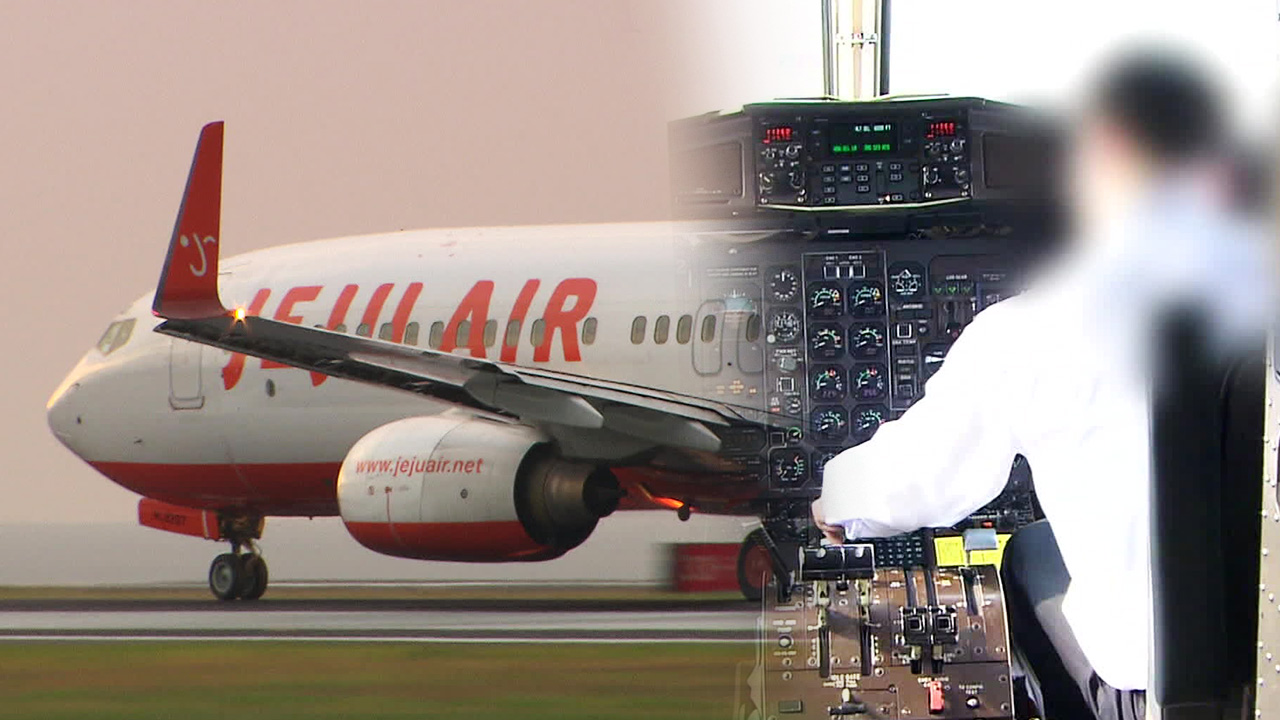Boeing 737 model lacking a fuel release system questioned to worsen explosion
입력 2024.12.30 (01:23)
읽어주기 기능은 크롬기반의
브라우저에서만 사용하실 수 있습니다.
[Anchor]
When an airplane makes a belly landing, it sometimes dumps fuel for safety, but this time there was no such measure taken.
Analysis suggests that the aircraft model did not have such a system.
This part has been examined by reporter Moon Ye-seul.
[Report]
The accident-incurred aircraft is a Boeing 737 model, which primarily operates on short-haul flights.
As a result, it does not have a fuel dumping system.
A fuel dumping system is a device that allows fuel to be released in emergencies to reduce weight.
This can reduce the impact during a belly landing and also lessen the scale of explosions and fires that increase with more fuel onboard.
Because the passenger aircraft that crashed was also a Boeing 737, it lacked this system.
This means the aircraft needed to find other means to exhaust as much fuel as possible, but experts presume that the situation may not have allowed for that.
[Kim Hyun-deok/Professor, Department of Aviation Operations, Korea Aerospace University: "They needed to burn off all the fuel while circling in the air, but due to the urgent situation and other factors..."]
At the end of the runway where the accident occurred, there was a device to guide aircraft landings, known as a localizer.
Before the exterior collision, the aircraft may have collided with a concrete structure called the 'localizer antenna,' which could have worsened the damage.
[Kim Gyu-wang/Professor, Department of Aviation Operations Management, Hanseo University: "There is a localizer antenna that determines which direction to approach the runway. It seems the collision with that part was when the first impact occurred. The second collision with the exterior wall seems to have intensified the impact."]
Comparing this incident with other past belly landings, it is evident that the explosion and fire made the damage greater.
Meanwhile, the two surviving crew members were found at the detached tail of the fuselage.
Aviation experts analyzed that if the surviving crew members had been seated at the very back, facing away from the passengers, their seatbacks could have absorbed the impact.
This is KBS News, Moon Ye-seul.
When an airplane makes a belly landing, it sometimes dumps fuel for safety, but this time there was no such measure taken.
Analysis suggests that the aircraft model did not have such a system.
This part has been examined by reporter Moon Ye-seul.
[Report]
The accident-incurred aircraft is a Boeing 737 model, which primarily operates on short-haul flights.
As a result, it does not have a fuel dumping system.
A fuel dumping system is a device that allows fuel to be released in emergencies to reduce weight.
This can reduce the impact during a belly landing and also lessen the scale of explosions and fires that increase with more fuel onboard.
Because the passenger aircraft that crashed was also a Boeing 737, it lacked this system.
This means the aircraft needed to find other means to exhaust as much fuel as possible, but experts presume that the situation may not have allowed for that.
[Kim Hyun-deok/Professor, Department of Aviation Operations, Korea Aerospace University: "They needed to burn off all the fuel while circling in the air, but due to the urgent situation and other factors..."]
At the end of the runway where the accident occurred, there was a device to guide aircraft landings, known as a localizer.
Before the exterior collision, the aircraft may have collided with a concrete structure called the 'localizer antenna,' which could have worsened the damage.
[Kim Gyu-wang/Professor, Department of Aviation Operations Management, Hanseo University: "There is a localizer antenna that determines which direction to approach the runway. It seems the collision with that part was when the first impact occurred. The second collision with the exterior wall seems to have intensified the impact."]
Comparing this incident with other past belly landings, it is evident that the explosion and fire made the damage greater.
Meanwhile, the two surviving crew members were found at the detached tail of the fuselage.
Aviation experts analyzed that if the surviving crew members had been seated at the very back, facing away from the passengers, their seatbacks could have absorbed the impact.
This is KBS News, Moon Ye-seul.
■ 제보하기
▷ 카카오톡 : 'KBS제보' 검색, 채널 추가
▷ 전화 : 02-781-1234, 4444
▷ 이메일 : kbs1234@kbs.co.kr
▷ 유튜브, 네이버, 카카오에서도 KBS뉴스를 구독해주세요!
- Boeing 737 model lacking a fuel release system questioned to worsen explosion
-
- 입력 2024-12-30 01:23:25

[Anchor]
When an airplane makes a belly landing, it sometimes dumps fuel for safety, but this time there was no such measure taken.
Analysis suggests that the aircraft model did not have such a system.
This part has been examined by reporter Moon Ye-seul.
[Report]
The accident-incurred aircraft is a Boeing 737 model, which primarily operates on short-haul flights.
As a result, it does not have a fuel dumping system.
A fuel dumping system is a device that allows fuel to be released in emergencies to reduce weight.
This can reduce the impact during a belly landing and also lessen the scale of explosions and fires that increase with more fuel onboard.
Because the passenger aircraft that crashed was also a Boeing 737, it lacked this system.
This means the aircraft needed to find other means to exhaust as much fuel as possible, but experts presume that the situation may not have allowed for that.
[Kim Hyun-deok/Professor, Department of Aviation Operations, Korea Aerospace University: "They needed to burn off all the fuel while circling in the air, but due to the urgent situation and other factors..."]
At the end of the runway where the accident occurred, there was a device to guide aircraft landings, known as a localizer.
Before the exterior collision, the aircraft may have collided with a concrete structure called the 'localizer antenna,' which could have worsened the damage.
[Kim Gyu-wang/Professor, Department of Aviation Operations Management, Hanseo University: "There is a localizer antenna that determines which direction to approach the runway. It seems the collision with that part was when the first impact occurred. The second collision with the exterior wall seems to have intensified the impact."]
Comparing this incident with other past belly landings, it is evident that the explosion and fire made the damage greater.
Meanwhile, the two surviving crew members were found at the detached tail of the fuselage.
Aviation experts analyzed that if the surviving crew members had been seated at the very back, facing away from the passengers, their seatbacks could have absorbed the impact.
This is KBS News, Moon Ye-seul.
When an airplane makes a belly landing, it sometimes dumps fuel for safety, but this time there was no such measure taken.
Analysis suggests that the aircraft model did not have such a system.
This part has been examined by reporter Moon Ye-seul.
[Report]
The accident-incurred aircraft is a Boeing 737 model, which primarily operates on short-haul flights.
As a result, it does not have a fuel dumping system.
A fuel dumping system is a device that allows fuel to be released in emergencies to reduce weight.
This can reduce the impact during a belly landing and also lessen the scale of explosions and fires that increase with more fuel onboard.
Because the passenger aircraft that crashed was also a Boeing 737, it lacked this system.
This means the aircraft needed to find other means to exhaust as much fuel as possible, but experts presume that the situation may not have allowed for that.
[Kim Hyun-deok/Professor, Department of Aviation Operations, Korea Aerospace University: "They needed to burn off all the fuel while circling in the air, but due to the urgent situation and other factors..."]
At the end of the runway where the accident occurred, there was a device to guide aircraft landings, known as a localizer.
Before the exterior collision, the aircraft may have collided with a concrete structure called the 'localizer antenna,' which could have worsened the damage.
[Kim Gyu-wang/Professor, Department of Aviation Operations Management, Hanseo University: "There is a localizer antenna that determines which direction to approach the runway. It seems the collision with that part was when the first impact occurred. The second collision with the exterior wall seems to have intensified the impact."]
Comparing this incident with other past belly landings, it is evident that the explosion and fire made the damage greater.
Meanwhile, the two surviving crew members were found at the detached tail of the fuselage.
Aviation experts analyzed that if the surviving crew members had been seated at the very back, facing away from the passengers, their seatbacks could have absorbed the impact.
This is KBS News, Moon Ye-seul.
-
-

문예슬 기자 moonster@kbs.co.kr
문예슬 기자의 기사 모음
-
이 기사가 좋으셨다면
-
좋아요
0
-
응원해요
0
-
후속 원해요
0















이 기사에 대한 의견을 남겨주세요.